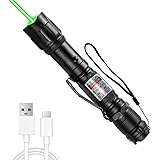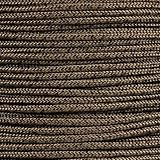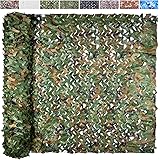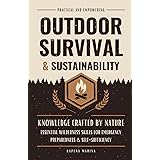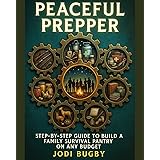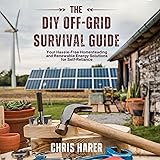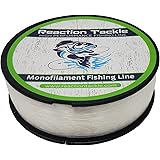Are you contemplating a hands-on project to revitalize a cherished blade or perhaps enhance a classic fixed-blade knife? As expertly demonstrated in the accompanying video, the intricate processes involved in knife customization and repair demand both meticulous attention and specialized knowledge. This segment offers an in-depth exploration of the techniques and considerations pivotal to transforming or restoring your most valued cutting tools, moving beyond the preliminary overview presented in the visual content.
The Art of Knife Customization and Repair: A Deeper Dive
The endeavor of knife customization and repair is significantly more intricate than a mere aesthetic alteration; it often involves enhancing functionality, restoring historical pieces, or tailoring a tool to specific ergonomic requirements. This comprehensive process, as briefly touched upon in the video’s discussion of the ‘Scout 5 repair project,’ encompasses various critical stages, from material selection to the final stages of blade finishing. Therefore, a profound understanding of these phases is deemed essential for achieving exemplary outcomes in any custom knife project.
Selecting Premium Materials for Enhanced Performance
When embarking upon a knife customization project, the selection of appropriate materials is undeniably paramount, influencing both the performance and longevity of the finished blade. As indicated by the mention of S35VN steel and Micarta handles in the video, specific material choices significantly impact a knife’s characteristics. Consequently, a thorough consideration of each component’s properties is always advised.
Blade Steel: Performance and Durability
The Buck 119 Pro Series, which was showcased, exemplifies the utility of advanced blade steels such as S35VN. This particular stainless steel, frequently selected for its superior balance of toughness, wear resistance, and corrosion resistance, is a preferred material for high-performance fixed blades. Furthermore, its fine grain structure enables the attainment of an exceptionally keen edge, which is then retained through rigorous use. Similarly, the VG10 steel found in the Seki, Japan knife carried by the presenter is a high-carbon stainless steel renowned for its robust edge retention and ease of sharpening, often lauded in the premium Japanese cutlery segment. Therefore, the choice of blade steel is undeniably a foundational decision impacting the knife’s overall capability.
Handle Materials: Ergonomics and Resilience
The comfort and security of a knife’s grip are predominantly determined by its handle material. The video highlighted both classic phenolic handles and modern Micarta, each offering distinct advantages. Phenolic resin, historically used for its durability and classic appearance on traditional knives like the original Buck 119, provides a sturdy, albeit somewhat less grippy, surface. Conversely, Micarta, an industrial laminate composed of linen or paper bonded with resin, offers exceptional grip, especially when wet, and superior resistance to environmental factors. This material is also highly favored for its aesthetic versatility, as it can be sanded and polished to reveal various patterns, enhancing the custom appeal of a knife. The successful integration of such materials into a custom knife project ultimately culminates in both functional superiority and enhanced tactile experience.
Precision in the Customization and Repair Process
The ‘Scout 5 repair project’ serves as an illustrative example of the meticulous steps involved in knife customization and repair. From initial disassembly to the final stages of polishing, each phase requires precise execution to ensure the integrity and functionality of the knife. Consequently, a structured approach is invariably adopted by experienced craftsmen.
Fitting and Refinishing Components
During a significant repair or customization, components such as bolsters and handguards often require careful fitting and refinishing. The process entails precise shaping and alignment to achieve seamless transitions between the blade and handle. Subsequently, these metallic components are polished to a high luster, thereby restoring their original aesthetic appeal and protecting them from environmental degradation. Furthermore, securing the leather lanyard, as mentioned in the video, involves careful re-attachment and ensuring its proper function and durability. The diligent application of a leather conditioner is also imperative; this treatment not only enhances the material’s appearance but also significantly extends its lifespan and preserves its pliability, preventing cracking and drying.
Sharpening and Stropping: The Pinnacle of Blade Performance
Achieving a razor-sharp edge is a critical aspect of any knife repair or customization project. The process typically begins with sharpening using progressively finer abrasives to establish the desired blade geometry and refine the edge. Following this, stropping is performed, which involves drawing the blade across a leather or fabric surface often loaded with an abrasive compound. This final step is vital for removing any microscopic burrs that remain after sharpening, thereby aligning the edge and producing an unparalleled level of sharpness. As demonstrated with the “cutting paper test” in the video, a properly sharpened and stropped blade exhibits effortless cutting performance, indicative of masterful blade maintenance. Therefore, these precise techniques are instrumental in maximizing the cutting efficacy of any knife.
Everyday Carry (EDC) Knives: Practicality in Selection
The discussion also included everyday carry (EDC) knives, specifically mentioning the SOG Toothlock and a VG10 Seki, Japan knife. These choices reflect a user’s preference for reliability and utility in their daily routine. An EDC knife is selected for its practicality, ease of carry, and ability to perform a myriad of common tasks, from opening packages to more demanding cutting operations. The SOG Toothlock, for example, is recognized for its robust locking mechanism and ergonomic design, making it a reliable folding knife. Meanwhile, the VG10 Seki, Japan knife, often a fixed blade or a high-quality folder, is valued for its superior steel quality and traditional craftsmanship, ensuring consistent performance. These choices collectively highlight the thoughtful consideration given to tools that are consistently relied upon.


